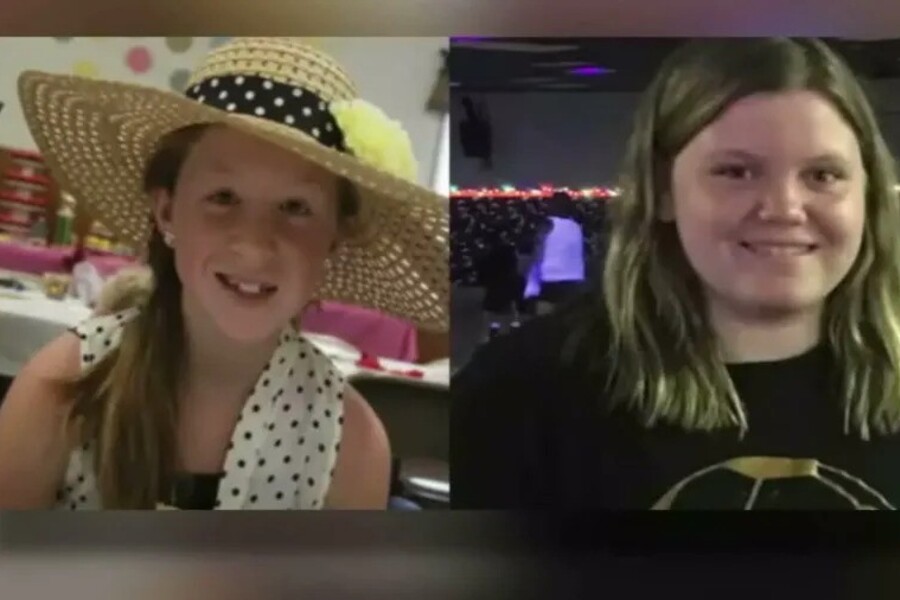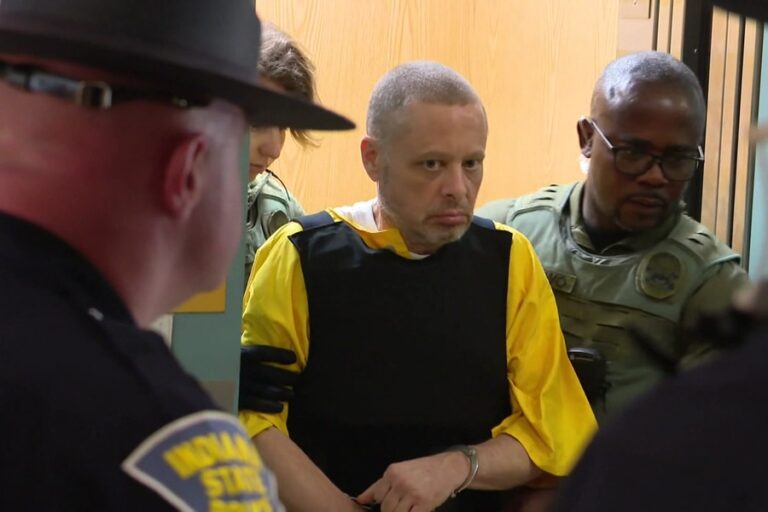The trial of Richard Allen, accused of the 2017 murders of Abigail Williams, 13, and Liberty “Libby” German, 14, continued on Tuesday with jurors presented with some of the most compelling evidence in the case. The courtroom was silent as jurors viewed video footage taken from Libby’s phone, showing a man walking on a bridge just before the girls were murdered. This was the first time the jury had seen the longer version of the video, a key piece of evidence in the ongoing trial.
Allen, 52, is facing four counts of murder for the deaths of the two girls, who were found near the Monon High Bridge in Delphi on February 14, 2017. He has pleaded not guilty to all charges.
The video on Libby’s phone has been a crucial part of the investigation from the beginning. It shows a man on the bridge, later identified by witnesses as the same person captured in Libby’s recording. Investigators previously released a shorter clip of the video in an effort to gather information from the public, but Tuesday marked the first time a longer version was shown to jurors.
The digital forensic analyst who retrieved the data from Libby’s phone testified about the process used to extract and preserve the evidence. According to his testimony, the phone was found at the crime scene and had been crucial in helping detectives develop leads.
Lead crime scene investigator Brian Olehy took the stand again to present other pieces of evidence collected from the scene. While many of these items were not displayed to the jury, Olehy’s testimony highlighted key findings. He testified that branches and sticks appeared to have been placed over the girls’ bodies, suggesting an attempt to conceal them. Additionally, he indicated that some of the clothing found on Abby Williams seemed too large for her, leading to the possibility that she had been dressed in some of Libby’s clothes.

During cross-examination, defense attorney Brad Rozzi questioned Olehy about the DNA evidence, pressing him on whether any samples collected from the scene linked Allen to the crime. Olehy acknowledged that there was no DNA evidence directly connecting Allen, a point that the defense is likely to use as a focal point in their arguments.
One of the most significant pieces of physical evidence presented was a single unspent bullet found at the scene. Prosecutors believe that this bullet ties Allen to the crime, though the defense has countered by questioning its relevance. The exact role of this bullet in the prosecution’s case remains unclear, but it is expected to be a key element as the trial progresses.
Two witnesses, Railly Voorhies and Betsy Blair, testified about seeing a suspicious man near the Freedom Bridge in Delphi on the day of the murders. Voorhies, who was a high school student at the time, described the man as “unsettling” and said he glared at her. She identified him as the same person shown in the video from Libby’s phone. Blair’s testimony corroborated this, adding further weight to the prosecution’s case that the man seen on the bridge was the same individual responsible for the killings.
The defense team, led by Brad Rozzi, has sought to cast doubt on the prosecution’s case, particularly the lack of direct DNA evidence linking Allen to the crime. Rozzi pointedly questioned Olehy about the findings, pressing the investigator on whether the absence of physical evidence could suggest someone else’s involvement. Olehy conceded that no DNA evidence or other definitive forensic connections had been made to Allen, which the defense will likely highlight as a key argument.
Rozzi also focused on the sequence of events and the clothing found on the girls, suggesting that the situation was more complex than initially presented. During the trial, he argued that certain assumptions made by the prosecution, such as the notion of disrobing and redressing, were merely “logical assumptions” rather than evidence-based conclusions.
